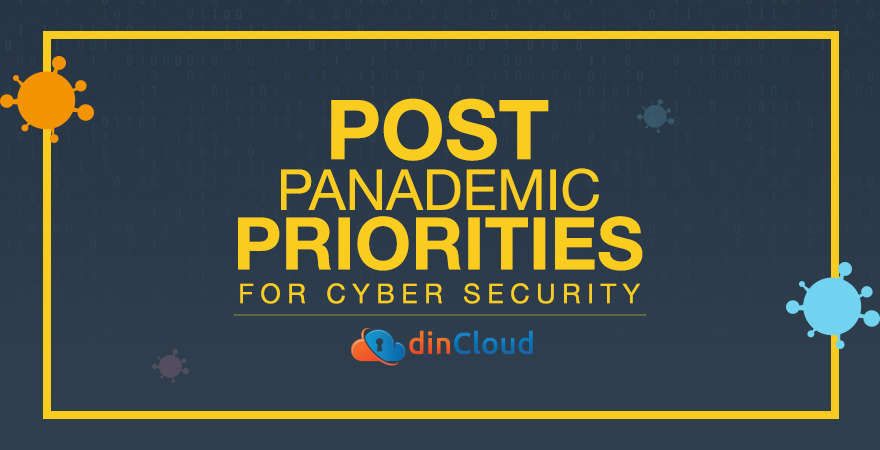The past few years have been quite eventful in terms of digital transformation initiatives. However, very few of those transformation blueprints actually transpired into concrete measures until the Covid-19 pandemic took us by surprise.

During the peak of the pandemic and even now, digital transformation has propped up among the top most priorities for millions of businesses. Now, digital enablement is no more a luxury or option, it has become a lifesaver.
Also Read: 6 Ways to Balance Remote Productivity and Security
Company wide initiatives are otherwise really challenging to pull off. Add to it the unprecedented level of urgency imposed by this global pandemic and you have a near chaotic situation at hand.
However, knowing that digital transformation initiatives such as cloud migration or remote readiness were key to survival, companies have embraced them; despite the zero to little level of preparedness.
Also Read: How to Attain Network Security in the Cloud & Beyond?
Effects of Speedy Digital Initiatives
With little room for disagreement, the major casualty in speedy adoption of digital solutions has been security. Companies when faced with existential threats decided to forego security in favor of operational capability.
Now that most remote productivity solutions have been in implementation for weeks and even months, it’s about time to critically analyze these solutions purely from a cyber security perspective.
Also Read: dinCloud Boosts its Capacity and Cyber Security Posture
Let’s highlight a few top cyber security priorities as your IT infrastructure enters a very crucial post pandemic stage.
Build Internal Trust
In the post pandemic work environment, security has outgrown other stand alone functional areas and become an all encompassing need. When becoming remote work capable, you can’t pick and choose between functional areas.
Now, your entire IT infrastructure, whether on premise, cloud only, hybrid or multi cloud will need a blanket of cyber security. It won’t be an overstatement to say that security is now among the top few strategic priorities.
So, you will need to align strategic organizational goals with security related priorities. To pull off this paradigm shift, you will need to build an environment of trust at the organizational level.
In this environment, every member of your organization will have to shoulder a proportionate share of responsibility in terms of security. Professionals serving as CISOs and CIOs will need to have more say in organizational decision making.
Also Read: Adoption of Cloud Security Solutions Registers a Sharp Increase
Win Customer’s Trust
Rest assured, your customers are also feeling the heat of this crisis and they have worries of their own. While they may be happy with receiving uninterrupted service, they may be concerned about the “costs” of this luxury.
These costs, so to say, could be in the form personal information theft or breach of privacy. Now is the perfect time to assess customer concerns about security of their confidential or sensitive information and what you’re doing about them.
If you have already taken remedial measures or in the process of fortifying systems, let your customers know. This will put their warranted concerns to rest and develop an environment of trust, where they’ll know that their data or information is in safe hands.
Also Read: Cloud Security Market to Reach $68.5 BN by Year 2025
Earn Regulator’s Trust
As if this was otherwise easy even before this crisis, you will still need to address this issue head on. Regulatory compliance is not something you can simply turn a blind eye to and think no one’s going to notice. Well, compliance doesn’t work that way.
Sooner or later, non compliance will get the better of you and when that happens, the associated costs could be catastrophic. Regulators are also baffled by the sheer scale of changes triggered by this pandemic, but they are also here to do a job.
Don’t make their job more difficult and in turn, increase your worries. Be proactive in communicating with regulators of your respective industry and figure out what’s required of you to become more compliant.
Identify if there are any compliance gaps and maintain constant communication with regulators on what you are doing to bridge those gaps. Seek the help of your Cloud Service Provider (CSP) to determine your current level of regulatory compliance.
This is one area where independently certified cloud providers like dinCloud make compliance all that more easy. Our global data centers already comply with leading international standards for data privacy and security, making YOU compliant.
Also Read: Work from Home and Cloud Security Challenges
Buckle Up for the Next Disruption
Unforeseen events befall your business without any prior notice. So, your only line of defense against unforeseen contingencies such as a global pandemic is prior preparedness. When reacting in chaos, you are highly likely to leave gaps in security.
Now that you have somehow weathered this storm, good or bad, convert this into an opportunity to plan perfectly for the next such disruptive event. How prepared are you to sustain mission critical operations in a secure manner.
Also Read: State of Cloud Security in Multi Cloud Environments
The Changing Security Paradigm
As remote work initiatives achieve global acceptance, it appears this will be a regular aspect of your IT infrastructure. Instead of applying security tools here and there in a haphazard fashion, you should adopt a “security first” approach to any such initiative.
In this way, you are weaving security into the very DNA of your organization’s structure. By doing so, you will be able to resurrect an IT infrastructure that’s not only prepared for contingencies, but is also highly secure.
Also Read: Why Should Cloud Security Evaluation be Your Top Priority?
If you are looking to the cloud for developing a robust Business Continuity (BC) plan, look no further than dinCloud’s best in class and highly secure Cloud Hosted Virtual Desktops (dinHVD), Virtual Servers and Virtual Databases.


